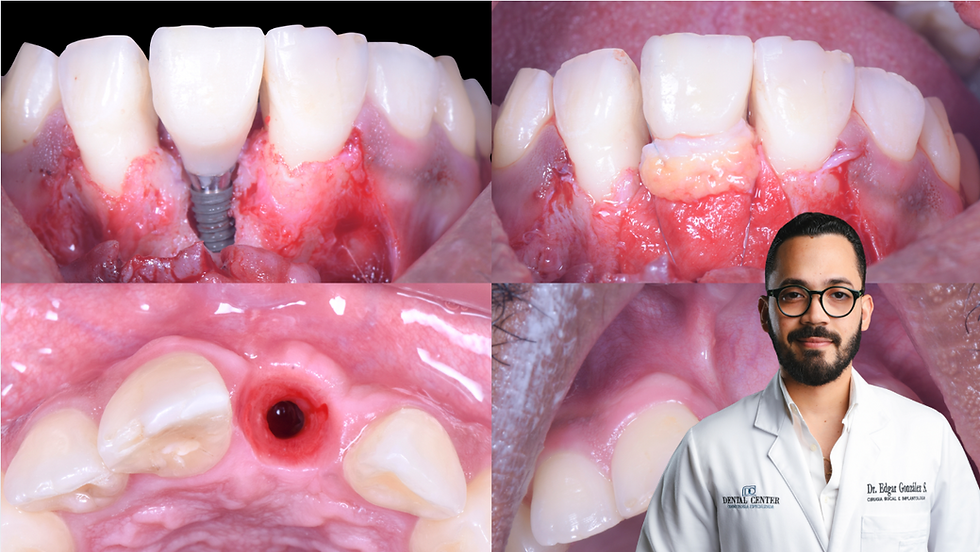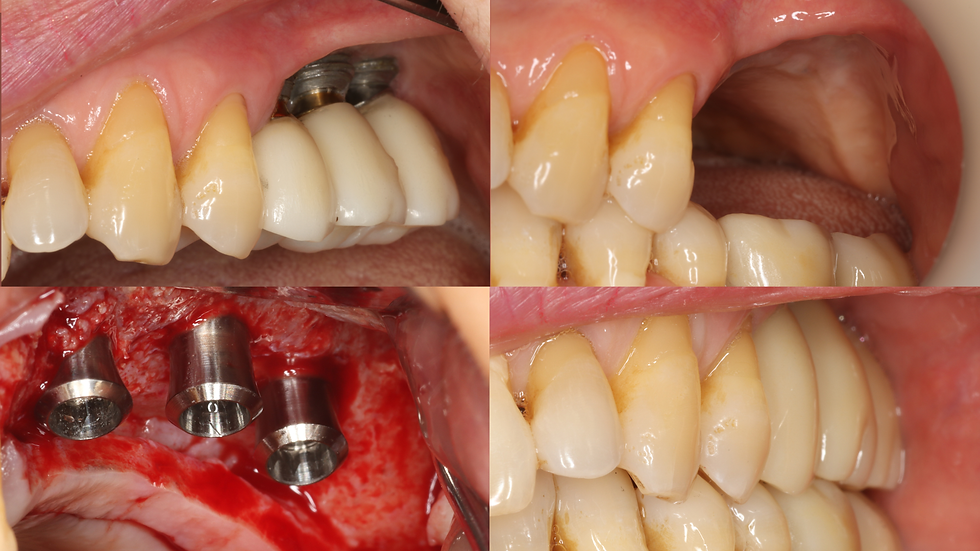10mm Sinus Lifting with the SCA Technique in the Severely Concave Sinus Floor
- Dr. YoungKu Heo

- May 31, 2018
- 2 min read
Situation

A 54-year-old female, no specific medical problem.
Periapical view 3 weeks after extraction. Residual bone height was about 3-4mm and a long septum was present.

CT images before implant placement. There was no specific pathology in the maxillary sinus, but a distinguish septum was seen at the mesial side and thickened membrane at the distal area.

Gingiva healing 3 weeks after extraction of #26. It was decided to elevate the sinus floor about 10mm by the crestal approach as a septum is present near the implant position, and the shape of the sinus wall was very concave.

Bone defect on the buccal area was observed. Initial drill was used to mark the insertion position.

The implant site was widened with a Ø4.5mm drill with a 3mm long stopper.


Ø3.6mm S-reamer with 4mm stopper in the SCA kit was used to drill for the opening into the sinus cavity. 1200 rpm was used.

The maxillary sinus membrane was seen directly without forming a thin bone disk this time. It was intact without perforation.

Bone material (Calpore, Kyungwon, Seoul Korea) was grafted by using the bone carrier. About 0.7mm bone was inserted for elevating the membrane about 10mm . This could be done because of the severe concave wall of the sinus due to the septum.

0.6cc of bone was inserted by spreading the bone inside the sinus.

Periapical view after bone graft. The membrane was elevated about 10mm at the mesial side due to the existence of a septum. On the distal side, however, there was minimum membrane elevation with little bone graft. This was not only because of the absence of a septum, but also because there was a thickening of the membrane in the distal side.

The larger spreader was used to spread bone graft materials to the distal side with a speed of 80 rpm. The graft material was inserted 1-2mm deep into the maxillary sinus.

Countersink drilling was used after bone graft due to D2 bone.

CMI IS 510 (Internal Submerged type) implant was placed.

The insertion torque value was 25 Ncm, which was sufficient for performing the one stage approach.

Healing abutment was connected because initial stability was satisfactory.

Periapical view after sinus bone graft and simultaneous implant placement. 10mm sinus elevation was performed, which was possible due to the severe concavity of the sinus. The distal part of the membrane was also elevated.

The buccal bone defect was filled with the same bone graft material.

A collagen membrane was placed.

Wound was closed by sutures with nonsubmerged approach.

CT view immediately after surgery. It was confirmed that 10mm was elevated from 4mm of residual bone, and bone graft was successful.

Panoramic view six months after surgery

Periapical view of final restoration eight months after implant placement.

Occlusal view after delivery of final restoration.

Panoramic view one year after delivery of final restoration.
It was confirmed that the implant was stable and the marginal bone was well maintained.

4 year follow-up periapical x-ray. The upper part of the bone graft had separated and disappeared.

7 year follow-up panoramic radiograph. Marginal bone level has been well maintained.



Comments